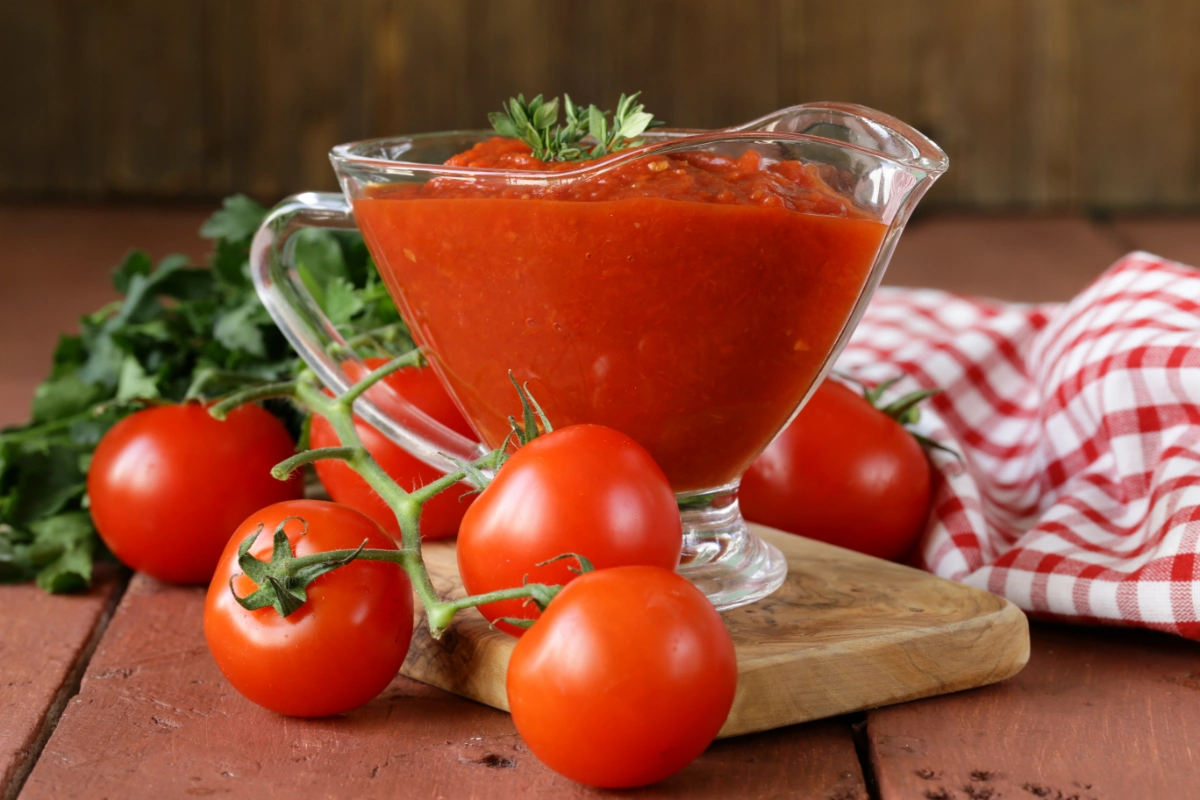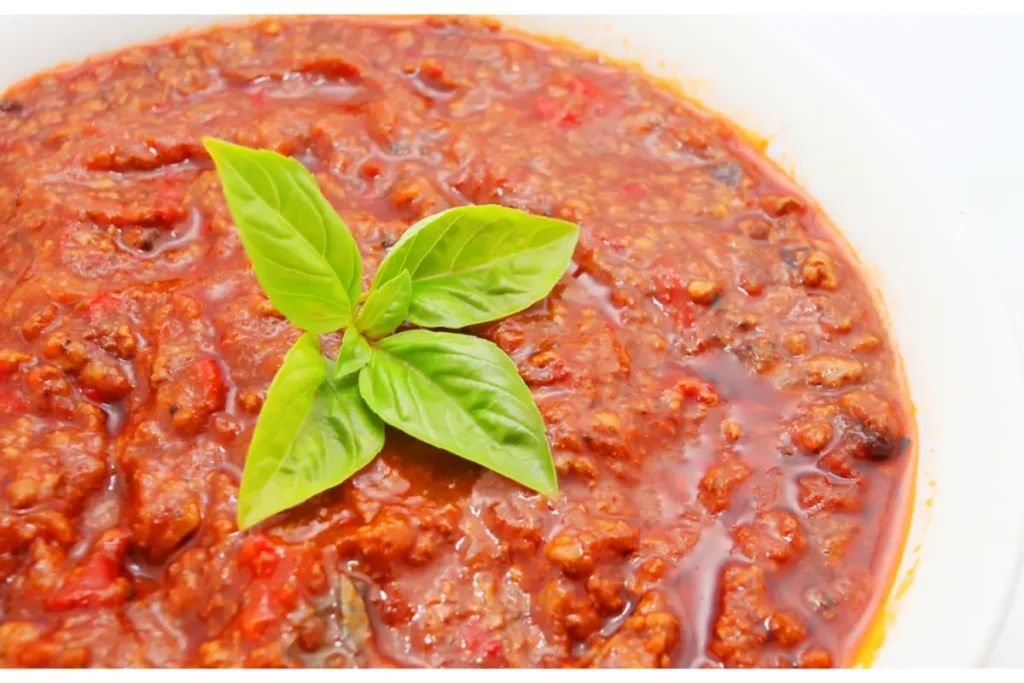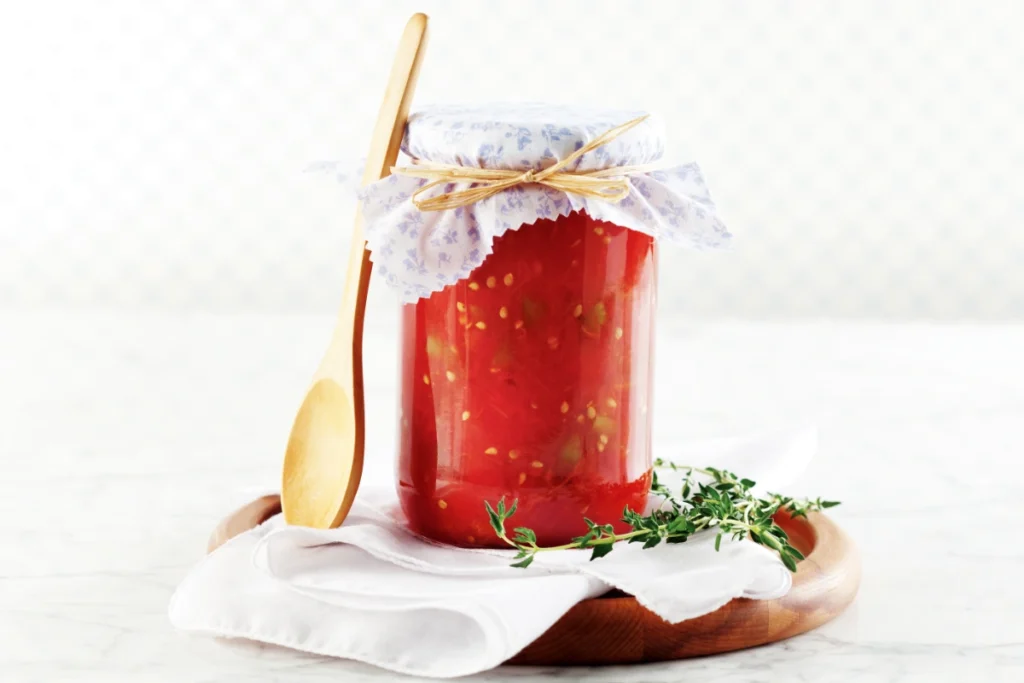Tomato gravy, a beloved staple in Southern cuisine, is a delectable blend of ripe tomatoes, savory spices, and a touch of creaminess. This flavorful gravy has earned its place as a cherished accompaniment to various dishes, from fluffy biscuits to crispy fried chicken. In this comprehensive guide, we’ll unveil the secrets behind this tantalizing Southern delicacy, exploring its ingredients, preparation methods, and the cultural significance that has made it a beloved addition to countless family gatherings.
Introduction to Tomato Gravy
What is Tomato Gravy?
Tomato gravy is a thick, velvety sauce that derives its distinct flavor from a harmonious combination of tomatoes, flour or cornstarch, and a variety of herbs and spices. Unlike traditional brown or white gravies, which primarily rely on meat drippings or a roux for their base, tomato gravy celebrates the natural sweetness and tanginess of tomatoes as its star ingredient.
This Southern classic has been a staple in many households for generations, passed down from one kitchen to another, with each family putting their unique spin on the recipe. Its origins can be traced back to the resourcefulness of Southern cooks, who skillfully transformed humble ingredients into a delectable and comforting dish.
Tomato Gravy vs. Other Gravies
While traditional gravies often serve as a complementary topping for meats and potatoes, tomato gravy takes center stage as a flavorful accompaniment in its own right. Its vibrant hue and tangy-sweet taste set it apart from the more subdued flavors of brown or white gravies.
Unlike its counterparts, which rely heavily on meat drippings or a roux for their richness, tomato gravy’s distinct character stems from the natural sweetness of ripe tomatoes, balanced by the savory notes of herbs and spices.
Why Tomato Gravy is a Southern Staple
Tomato gravy’s enduring popularity in Southern cuisine can be attributed to its versatility and deeply rooted cultural significance. Not only does it pair beautifully with a wide range of dishes, from biscuits and fried chicken to meatloaf and grits, but it also holds a special place in the hearts and memories of generations of Southern families.
Deeply intertwined with the region’s culinary traditions, tomato gravy represents the resourcefulness and creativity of Southern cooks who could transform simple, readily available ingredients into a flavorful and comforting dish that brought people together around the table.
Main Ingredients in Tomato Gravy
Tomatoes
The star ingredient in any tomato gravy recipe is, unsurprisingly, tomatoes. While people often prefer fresh, ripe tomatoes for their vibrant flavor and natural sweetness, they can also use canned or jarred varieties, especially during the off-season when fresh tomatoes are less readily available.
When it comes to choosing the perfect tomatoes for your gravy, consider opting for flavorful varieties like Roma, San Marzano, or heirloom tomatoes. These tend to have a deeper, richer taste and lower water content, resulting in a more concentrated and flavorful gravy.
Preparing Tomatoes for Gravy
Before adding tomatoes to your gravy, it’s important to prepare them properly. For fresh tomatoes, this often involves peeling off the skin, which can lend a slightly bitter taste to the gravy. The quickest method is to score a small “X” at the bottom of each tomato, blanch them briefly in boiling water, and then transfer them to an ice bath. The skins should slip off easily.
Additionally, some recipes require seeding the tomatoes to remove excess moisture and achieve a thicker gravy consistency. You can do this by cutting the tomatoes in half and gently squeezing out the seeds and excess juice.
Once you have peeled and seeded (if desired) the tomatoes, you can chop or purée them, depending on your preference for texture in the final gravy.
Flour or Cornstarch
To achieve the desired thickness and velvety consistency, tomato gravy typically incorporates a thickening agent, such as flour or cornstarch. Both options have their pros and cons.
Flour is the more traditional choice and is used to create a roux – a cooked mixture of fat and flour that serves as the base for the gravy. Roux-based gravies tend to have a richer, more velvety texture and a slightly nutty flavor imparted by the browned flour.
On the other hand, cornstarch is a popular gluten-free alternative that can produce a smooth, glossy gravy without the need for a roux. It’s also a great option for those looking to avoid the potential lumpiness that can sometimes occur when using flour.
Roux Techniques
For those opting for the traditional flour-based route, mastering the roux is crucial. Start by melting butter, bacon grease, or your preferred fat in a saucepan over medium heat. Whisk in an equal amount of flour, and cook the mixture, stirring constantly, until it turns a light golden brown – this can take several minutes.
The key is to cook the roux long enough to eliminate any raw flour taste while avoiding burning or over-browning, which can impart a bitter flavor to the gravy.
Fats and Oils
In addition to their role in creating the roux, fats, and oils play a crucial part in developing the rich, satisfying flavor of tomato gravy. Common choices include butter, bacon grease, vegetable oil, or a combination thereof.
Bacon grease, in particular, lends a delightful smoky depth to the gravy, while butter contributes a creamy richness. For those seeking a lighter option, vegetable oil can be used, though it may lack the distinct flavor profile of animal-based fats.
Other Common Ingredients
While tomatoes, a thickening agent, and fat are the core components of tomato gravy, many recipes incorporate additional ingredients to enhance and customize the flavor profile. Finely diced onions and garlic are popular additions, providing an aromatic base.
Herbs like thyme, basil, or oregano can lend a vibrant, herbaceous note, while spices such as paprika, cayenne, or black pepper can add warmth and depth. Some cooks even incorporate a splash of vinegar or Worcestershire sauce for an extra tangy kick.
The beauty of tomato gravy lies in its versatility – feel free to experiment with different herbs, spices, and other flavor enhancers to create a gravy that suits your tastes.
Cooking Methods for Tomato Gravy
Stovetop Cooking
The traditional and most common method for preparing tomato gravy is on the stovetop. This hands-on approach allows you to closely monitor the gravy’s consistency and make adjustments as needed, ensuring a velvety, flavorful result.
To begin, start by preparing your roux (if using flour) or whisking together the cornstarch and a small amount of cold water (if using cornstarch as a thickener). Then, in a saucepan or skillet, sauté any aromatics, such as onions or garlic, in your chosen fat or oil until softened and fragrant.
Next, add the prepared tomatoes – whether fresh and chopped, puréed, or canned – along with any desired herbs and spices. Bring the mixture to a gentle simmer, and then slowly whisk in the roux or cornstarch slurry, stirring constantly to prevent lumps from forming.
Once the gravy has reached your desired consistency, reduce the heat to low and allow it to simmer gently for 10-15 minutes. This low and slow cooking method helps to concentrate the flavors and ensure a silky-smooth texture.
During the simmering process, be sure to taste and adjust the seasoning as needed, adding more herbs, spices, salt, or pepper to suit your preferences.
Variations and Shortcuts
While the stovetop method is tried and true, there are a few time-saving variations and shortcuts that can simplify the process without compromising on flavor.
For those short on time, consider using pre-made tomato sauce or paste as a base, and then enhancing it with your blend of spices and seasonings. This can significantly reduce the cooking time while still yielding a delicious tomato gravy.
Another convenient option is to utilize a slow cooker or Instant Pot. Simply combine all the ingredients in the appliance, and let it do the work for you, resulting in a hands-off, effortless gravy that’s ready when you are.
Remember, the key to a great tomato gravy is finding the right balance of flavors and achieving your desired consistency – whether you choose the traditional stovetop method or a time-saving shortcut.
Serving and Pairing Tomato Gravy
Tomato gravy is a versatile accompaniment that can elevate a wide range of dishes, both savory and sweet. Traditionally, it’s served over fluffy biscuits or spooned over crispy fried chicken, pork chops, or meatloaf, where its tangy-sweet flavor perfectly complements the richness of the main dish.
However, don’t limit yourself to just the classics. Tomato gravy can also be a delicious addition to shrimp and grits, eggs Benedict, or even as a unique topping for baked potatoes or roasted vegetables.
For those with a sweet tooth, consider using tomato gravy as a surprising and delightful sauce for French toast, waffles, or pancakes. The contrast of sweet and savory flavors can be truly captivating.
No matter how you choose to serve it, tomato gravy is sure to add a touch of Southern charm and flavor to any dish it accompanies.
Nutrition and Health Benefits
Nutritional Value of Tomato Gravy
While tomato gravy may not be considered a healthy food, it can provide a surprising number of nutrients when made with wholesome ingredients. The nutritional value will vary depending on the specific recipe, but a typical serving can offer a good source of vitamins, minerals, and beneficial plant compounds.
On average, a half-cup serving of tomato gravy can contain around 100-150 calories, with a moderate amount of fat and protein, primarily derived from the fats used in the roux or the addition of meat drippings. The carbohydrate content can range from 10-20 grams, depending on the amount of flour or cornstarch used as a thickener.
Compared to traditional brown or white gravies, tomato gravy can be a slightly healthier option due to its lower fat content and the nutritional benefits provided by the tomatoes themselves.
Health Benefits of Tomatoes
Tomatoes, the star ingredient in this gravy, are packed with a variety of beneficial nutrients and plant compounds. They are an excellent source of vitamin C, vitamin K, potassium, and folate, as well as a good source of vitamin E and several B vitamins.
Additionally, tomatoes are rich in lycopene, a powerful antioxidant that has been linked to a reduced risk of certain cancers, heart disease, and other chronic conditions. The vibrant red color of tomatoes is due to the presence of this beneficial carotenoid.
Other beneficial compounds found in tomatoes include chlorogenic acid, which may help regulate blood sugar levels, and tomatine, which has been studied for its potential anti-inflammatory and cancer-fighting properties.
Modifying Tomato Gravy for Dietary Needs
You can easily adapt tomato gravy to suit various dietary preferences and restrictions, making it an inclusive dish that many can enjoy.
For those watching their calorie or fat intake, consider using a smaller amount of fat or opting for a plant-based oil instead of butter or bacon grease. Replacing full-fat milk or cream with low-fat or non-dairy alternatives can also help reduce the overall calorie and fat content.
To make a gluten-free version, simply substitute the flour with cornstarch or another gluten-free thickener, such as arrowroot powder or tapioca starch.
For a dairy-free variation, omit any butter or milk products and use plant-based milk or broth as the liquid component.
Vegetarians and vegans can easily enjoy tomato gravy by omitting any meat-based ingredients and using vegetable broth or stock instead of chicken or beef broth.
With a few simple tweaks, this flavorful gravy can cater to a wide range of dietary needs, ensuring that everyone can indulge in its comforting goodness.
Frequently Asked Questions
Can tomato gravy be made ahead of time?
Absolutely! Tomato gravy is a fantastic make-ahead dish. Many would argue that it tastes even better after the flavors have had a chance to meld and deepen overnight. Simply prepare the gravy as usual, allow it to cool completely, and store it in an airtight container in the refrigerator for up to 5 days.
How long does tomato gravy last in the fridge or freezer?
Tomato gravy can be kept refrigerated for up to 5 days when stored properly in an airtight container. For longer storage, it can be frozen for up to 3 months. Be sure to allow the gravy to cool completely before transferring it to freezer-safe containers, leaving some headspace for expansion.
Can I use fresh or canned tomatoes?
Both fresh and canned tomatoes can be used to make delicious tomato gravy. Fresh, ripe tomatoes will lend a brighter, more vibrant flavor, while canned tomatoes offer convenience and consistent quality year-round. If using canned, opt for whole, peeled tomatoes or crushed tomatoes for the best texture.
What are some good substitutes for flour or cornstarch?
If you’re looking for alternatives to flour or cornstarch as a thickener, consider using arrowroot powder, tapioca starch, or even a roux made with gluten-free flour blends. These options can help achieve a similar thickness while accommodating dietary restrictions.
How can I make tomato gravy thicker or thinner?
To thicken tomato gravy, you can create a slurry by whisking together equal parts flour or cornstarch with cold water or broth, then slowly stirring it into the simmering gravy. For a thinner consistency, simply add more broth or milk until your desired thickness is achieved.
Can tomato gravy be made without meat products?
Yes, absolutely! You can easily make tomato gravy vegetarian or vegan by using plant-based fats like olive oil or coconut oil instead of butter or bacon grease and by substituting vegetable broth for any meat-based broths or drippings.
What are some common mistakes to avoid when making tomato gravy?
Some common pitfalls to avoid include oversalting (taste as you go!), overcooking the roux (which can lead to a burnt flavor), and not allowing enough simmering time for the flavors to fully develop. Additionally, be sure to whisk the roux or cornstarch slurry in slowly and gradually to prevent lumps from forming.
Summary of Key Points
In this comprehensive guide, we’ve explored the rich traditions and flavors that make tomato gravy a beloved staple in Southern cuisine. From its humble beginnings as a resourceful dish born out of necessity, it has evolved into a cherished and versatile accompaniment that graces countless family tables.
We’ve delved into the core ingredients that give tomato gravy its distinctive character, including the all-important tomatoes, thickening agents like flour or cornstarch, and flavorful fats and aromatics. We’ve also discussed various cooking methods, from the traditional stovetop approach to convenient slow cooker and Instant Pot variations.
Additionally, we’ve highlighted the surprising nutritional benefits that tomatoes can bring to this gravy, as well as ways to modify the recipe to suit various dietary needs and preferences.
Final Thoughts and Encouragement
Tomato gravy is more than just a dish – it’s an embodiment of Southern hospitality, a culinary tradition passed down through generations, and a comforting reminder of home. Whether you’re a seasoned pro or a newcomer to this tantalizing sauce, we encourage you to embrace its warmth and flavors in your kitchen.
Experiment with different ingredients, tweak the seasonings to suit your tastes, and most importantly, share this delectable gravy with loved ones around the table. After all, food is best enjoyed in the company of those who matter most, and tomato gravy has a special way of bringing people together, one savory bite at a time.
So, roll up your sleeves, gather your ingredients, and let the tantalizing aroma of simmering tomato gravy fill your kitchen – a cherished Southern tradition awaits!
For those eager to dive deeper into the art of crafting the perfect tomato gravy, check out our comprehensive article on making this beloved Southern staple.
Additional Tasty Recipes:
- Katsu Sauce: Indulge in the irresistible allure of authentic Japanese flavors with our tantalizing Katsu Sauce recipe. Discover the secret to achieving that perfect balance of sweet, savory, and tangy notes that elevates any dish to culinary excellence. Whether you’re a seasoned chef or a home cook eager to explore new tastes, this recipe promises to add an unforgettable dimension to your dining experience.
Katsu Sauce: The Ultimate Guide to This Umami-Rich Condiment
- Swordfish Recipe: Dive into a world of culinary adventure with our exquisite Swordfish Recipe. Immerse yourself in the rich, robust flavors of the sea as you embark on a gastronomic journey like no other. From the first succulent bite to the lingering aroma of perfectly seasoned fish, this recipe is sure to captivate your senses and leave you craving more.



